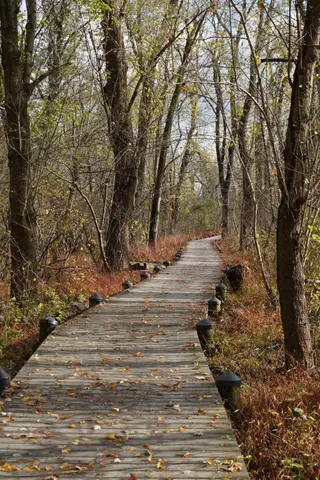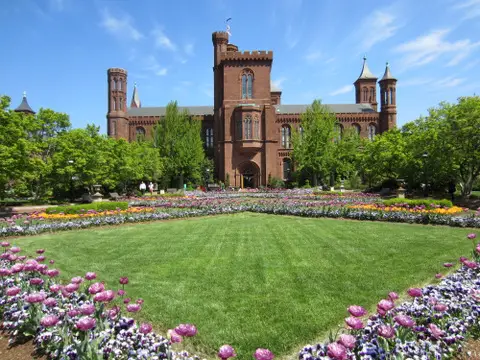The Top 7 Parks and Gardens to Visit in Washington D.C.
America’s capital has long been a top tourist destination, being home to countless important landmarks and museums. From the White House and Capitol Building to the Lincoln Memorial and Washington Monument, not to mention museums such as the Smithsonian National Museum of Natural History and the National Portrait Gallery, there is plenty to keep visitors occupied during their stay.
However, what you may be surprised to learn is that roughly 20% of D.C. is made up of parks and gardens. From grand green spaces like the U.S. National Arboretum and Theodore Roosevelt Island to more secluded gardens, there are a number of natural spaces where you can escape all the politics and congestion of the city. Even the National Mall abounds with beautiful landscaping.
Whether you plan on taking a self-drive road trip to the nation’s capital or have a large group/corporate gathering that is looking to visit Washington D.C. on a charter bus in order to leave all the traffic and navigation up to a highly trained professional driver, be sure to plan extra time to check out some of these gorgeous D.C. parks and gardens.


U.S. National Arboretum
The COVID-19 pandemic has taught us all the importance of social distancing at the moment and you’ll find plenty of space to spread out and get fresh air in the nation’s National Arboretum.
Spread out over 450 acres are impressive collections of boxwoods, Japanese maples, conifers, magnolias, ferns, and various perennial flowers. The most popular plants are the azaleas when in full bloom as well as the hundreds of bonsai trees.
In addition to the beautiful lawns, trees, and plants, there stands 22 Corinthian columns in the Arboretum’s Elipse Meadow. They are known collectively as the National Capitol Columns since they once held up the east portico of the U.S. Capitol Building until they were taken down in the 1950s and eventually transported here in the 1980s.
United States Botanic Garden
You’ll find one of America’s oldest continually operating botanic gardens right on the grounds of the U.S. Capitol. The gardens consist of a giant, nearly 30,000-square-foot conservatory with an almost 100-foot dome, as well as the outdoor 3-acre National Garden and nearby 2-acre Bartholdi Park.
The Conservatory brings together plants from all around the world including Hawaii, the Mediterranean, and desert regions. You’ll find a cactus garden, impressive display of thousands of colorful orchids, and rare plants such as the corpse flower which was recently in full bloom. There are also examples of plants originally bought back by Charles Wilkes during his historic expedition to the South Seas.
Meanwhile, in the National Garden, you’ll find a range of Mid-Atlantic plants along with a rose garden, butterfly garden, and the First Ladies Water Garden. The gardens were relocated to their present location in the 1930s and continues to delight visitors from all around the world every day.
National Botanic Gardens: photo by NCinDC
Kenilworth Park and Aquatic Gardens
Situated on the far northeast edge of the city, Kenilworth Park is often overlooked. The park includes the Aquatic Gardens section which is home to dozens of historic man-made ponds as well as 32 acres of tidal wetlands.
Summer attracts flower lovers who come early in the morning to catch sight of the lotus blossoms and water lilies when their flowers are fully open. The park also hosts an annual Lotus and Water Lily Festival each summer that celebrates the flowers while also bringing together music and fun activities. Birdwatchers also flock here themselves to catch sight of herons, egrets, and countless migratory birds such as warblers in the spring and fall.
A boardwalk over the marsh leads to viewing platforms where you can also try to spot turtles, frogs, beavers, and muskrats. You can also access a section of the Anacostia River Trail from the park. Other animals that may be spotted in the park closer to dusk include deer, coyotes, and foxes.
Theodore Roosevelt Island
If you’re really looking to escape the city to find secluded nature trails, head to Theodore Roosevelt Island which is completely free of both vehicles and bicycles. The island sits in the middle of the Potomac River and can be accessed by a footbridge from Arlington.
Once known to be a seasonal fishing village to the Native Americans that lived in the area, the island now offers hikers a number of trails that make their way through a dense hardwood forest and swamp. An elevated boardwalk allows you to keep your feet dry as you make your way through the swamp in search of southeastern five-lined skinks, various wading birds, and ducks. You may even catch sight of an occasional bald eagle flying over the river, allowing you to witness the national bird over the nation’s capital.

Rock Creek Park
America’s third established national park, Rock Creek Park is a large green space that offers an abundance of outdoor recreation. There are two primary trails within the park including the Western Ridge Trail and Valley Trail, with many side trails branching off in-between the two trails.
In addition to the hiking, jogging, and biking trails, the park also features over a dozen miles of equestrian trails which allow you to enjoy horse riding just a stone’s throw from the National Mall. The shaded pathways make for a welcomed retreat during summer and are quite flat and easy-going which makes them ideal for all ages and fitness levels.
Within the roughly 1,800-acre park, you’ll also find a planetarium and nature center as well as golfing and tennis facilities. A number of historic landmarks make things even more interesting and include the 19th century Peirce Mill as well as the Old Stone House which dates back to before the Revolutionary War.
Parts of the park are closed to vehicles on weekends, which allow you to enjoy even greater peace and quiet in nature within the city.
Photo By Kathleen Cole ( CC BY-SA 4.0 via Wikimedia Commons )
Kingman And Heritage Islands Park
Now a designated State Conservation area, the man-made Kingman and Heritage Islands once sat abandoned for over a century. Nowadays, the public can access Kingman Island via the footbridge that lies off the Anacostia Riverwalk Trail.
While the northern half of Kingman Island is a golf course, the lower half is open to hiking and biking. The trails may not be long, but they do offer yet another natural escape within D.C. There are fishing and boating opportunities, with dogs being allowed within the park so long as they remain on a leash.
Kingman Lake and the wetlands continue to be restored, with over a hundred different bird species now commonly being observed within the park.
Enid A. Haupt Garden
If you like your green spaces well-manicured with a slice of castle, then head to the Enid A. Haupt Garden. This stunning 4-acre garden sits next to the castle-looking Smithsonian Institution’s administrative office building off the National Mall, where you’ll actually be walking on top of underground museums and galleries such as the National Museum of African Art as you admire the gardens’ mix of flowers and fountains.
The gardens are designed to be a modernized version of an American Victorian garden, with three distinct sections to observe. There’s the symmetrically-patterned Parterre, Moongate Garden, and the Fountain Garden which has been modeled after the Alhambra’s Court of the Lions in Spain.
Photo By ( Another Believer, CC BY-SA 3.0 via Wikimedia Commons )
These are just a sampling of the parks and gardens that Washington D.C. has to offer. If you’re planning a longer stay, you can expand your enjoyment of nature by checking out other nearby green spaces such as Fort Bennett Park and Palisades Trail, Foundry Branch Valley Park, Fort Dupont Park, and the gardens of Tudor Place.

























August 15, 2021
Relax by the water, exercise at the fitness station, or check out the skating pavilion (open in the summer). This is one of Washington, D.C.’s largest parks—and it’s all free—spanning over 1,200 acres, so you’re bound to find a place to unwind without having to worry about crowds. Adults will love seeing the columns that originally supported the old East Portico of the Capitol building and a 390-year-old bonsai tree that survived an atomic bomb. But kids should visit the U.S. National Arboretum for the Washington Youth Garden, a one-acre demonstration garden—complete with a stage and sand boxes—where they can learn about, dig, and even water the plants.